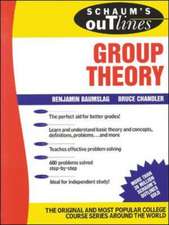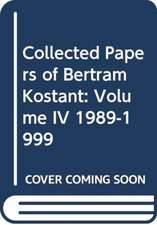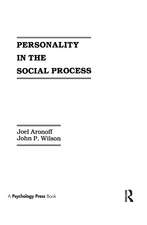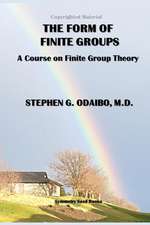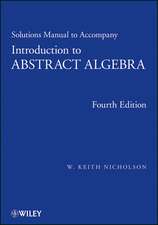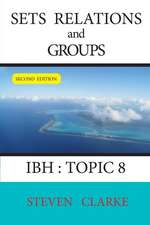Buildings: Theory and Applications: Graduate Texts in Mathematics, cartea 248
Autor Peter Abramenko, Kenneth S. Brownen Limba Engleză Hardback – 28 aug 2008
| Toate formatele și edițiile | Preț | Express |
|---|---|---|
| Paperback (1) | 515.01 lei 6-8 săpt. | |
| Springer – 19 noi 2010 | 515.01 lei 6-8 săpt. | |
| Hardback (1) | 520.19 lei 6-8 săpt. | |
| Springer – 28 aug 2008 | 520.19 lei 6-8 săpt. |
Din seria Graduate Texts in Mathematics
- 17%
 Preț: 528.66 lei
Preț: 528.66 lei -
 Preț: 337.45 lei
Preț: 337.45 lei -
 Preț: 383.85 lei
Preț: 383.85 lei -
 Preț: 402.87 lei
Preț: 402.87 lei - 17%
 Preț: 398.97 lei
Preț: 398.97 lei -
 Preț: 355.82 lei
Preț: 355.82 lei -
 Preț: 411.83 lei
Preț: 411.83 lei -
 Preț: 404.47 lei
Preț: 404.47 lei -
 Preț: 289.88 lei
Preț: 289.88 lei - 17%
 Preț: 365.79 lei
Preț: 365.79 lei - 17%
 Preț: 359.45 lei
Preț: 359.45 lei -
 Preț: 450.64 lei
Preț: 450.64 lei - 15%
 Preț: 488.70 lei
Preț: 488.70 lei - 17%
 Preț: 430.49 lei
Preț: 430.49 lei -
 Preț: 426.27 lei
Preț: 426.27 lei - 13%
 Preț: 357.75 lei
Preț: 357.75 lei -
 Preț: 407.88 lei
Preț: 407.88 lei - 13%
 Preț: 352.49 lei
Preț: 352.49 lei - 13%
 Preț: 358.86 lei
Preț: 358.86 lei - 13%
 Preț: 393.48 lei
Preț: 393.48 lei - 11%
 Preț: 351.00 lei
Preț: 351.00 lei - 17%
 Preț: 359.58 lei
Preț: 359.58 lei -
 Preț: 350.45 lei
Preț: 350.45 lei -
 Preț: 399.74 lei
Preț: 399.74 lei -
 Preț: 498.91 lei
Preț: 498.91 lei - 20%
 Preț: 571.26 lei
Preț: 571.26 lei - 15%
 Preț: 546.59 lei
Preț: 546.59 lei -
 Preț: 498.69 lei
Preț: 498.69 lei - 15%
 Preț: 354.39 lei
Preț: 354.39 lei -
 Preț: 313.10 lei
Preț: 313.10 lei - 13%
 Preț: 427.39 lei
Preț: 427.39 lei - 17%
 Preț: 363.59 lei
Preț: 363.59 lei -
 Preț: 340.18 lei
Preț: 340.18 lei - 17%
 Preț: 364.47 lei
Preț: 364.47 lei - 17%
 Preț: 366.47 lei
Preț: 366.47 lei - 17%
 Preț: 366.06 lei
Preț: 366.06 lei -
 Preț: 247.59 lei
Preț: 247.59 lei - 17%
 Preț: 367.70 lei
Preț: 367.70 lei - 13%
 Preț: 356.79 lei
Preț: 356.79 lei - 17%
 Preț: 398.78 lei
Preț: 398.78 lei - 17%
 Preț: 398.51 lei
Preț: 398.51 lei - 17%
 Preț: 496.63 lei
Preț: 496.63 lei - 15%
 Preț: 482.97 lei
Preț: 482.97 lei -
 Preț: 401.99 lei
Preț: 401.99 lei - 17%
 Preț: 366.56 lei
Preț: 366.56 lei - 20%
 Preț: 449.73 lei
Preț: 449.73 lei -
 Preț: 380.34 lei
Preț: 380.34 lei -
 Preț: 364.79 lei
Preț: 364.79 lei - 17%
 Preț: 427.27 lei
Preț: 427.27 lei -
 Preț: 357.19 lei
Preț: 357.19 lei
Preț: 520.19 lei
Nou
Puncte Express: 780
Preț estimativ în valută:
99.56€ • 103.66$ • 84.13£
99.56€ • 103.66$ • 84.13£
Carte tipărită la comandă
Livrare economică 10-24 martie
Preluare comenzi: 021 569.72.76
Specificații
ISBN-13: 9780387788340
ISBN-10: 0387788344
Pagini: 754
Ilustrații: XXII, 754 p. 100 illus.
Dimensiuni: 155 x 235 x 39 mm
Greutate: 1.19 kg
Ediția:2008
Editura: Springer
Colecția Springer
Seria Graduate Texts in Mathematics
Locul publicării:New York, NY, United States
ISBN-10: 0387788344
Pagini: 754
Ilustrații: XXII, 754 p. 100 illus.
Dimensiuni: 155 x 235 x 39 mm
Greutate: 1.19 kg
Ediția:2008
Editura: Springer
Colecția Springer
Seria Graduate Texts in Mathematics
Locul publicării:New York, NY, United States
Public țintă
ResearchCuprins
Finite Reflection Groups.- Coxeter Groups.- Coxeter Complexes.- Buildings as Chamber Complexes ..- Buildings as W-Metric Spaces.- Buildings and Groups.- Root Groups and the Moufang Property ..- Moufang Twin Buildings and RGD Systems.- The Classification of Spherical Buildings.- Euclidean and Hyperbolic Reflection Groups.- Euclidean Buildings ..- Buildings as Metric Spaces.- Applications to the Cohomology of Groups.- Other Applications.
Recenzii
From the reviews:
American Mathematical Society Mathematical Reviews MR2439729:
"The book under review ... is the first encyclopedic treatment of buildings made available in the literature, so that with writing this book the authors manage to close a serious gap in the mathematical literature: the non-existence of an easily accessible reference for buildings beyond an introduction.
In their introduction the authors state that it is their ``goal in this book to treat buildings from all three ... points of view [via the simplicial, the combinatorial, and the metric approach]. The various approaches complement one another and are useful. On the other hand, [the authors] recognize that some readers may prefer one particular viewpoint. [The authors] have therefore tried to create more than one path through the book so that, for example, the reader interested only in the combinatorial approach can learn the basics without having to spend too much time studying buildings as simplicial complexes.'' In the reviewer's opinion, the authors perfectly reach this goal and, moreover, manage to show that the theory of buildings and their applications are active, thriving, exciting and beautiful areas of mathematics. This book is very well written. The reviewer is sure that it will become a standard reference for buildings and remain one for a very long time.
... The main advantages of the combinatorial approach to buildings are that it is elementary and abstract and, hence, easily accessible. Since the simplicial and combinatorial approaches are equivalent..., one can always work with the one which is more suitable for one's own problems or more appealing to one's own taste. It is indeed one of the great achievements of this book to introduce both concepts simultaneously and to combine them in a natural way.
... Chapter 8 is extremely valuable for students and researchers interested in the theory of twin buildings, as it makes the theory... easily accessible. It is particularly important for the mathematical community that the folklore Theorem 8.27 has finally been recorded.
... Altogether, the book under review is a wonderful piece of work that will have many enthusiastic readers."
“This book is the first one which presents all of the different approaches to buildings alongside one another, and it does so in an accessible yet thorough manner which should prove extremely useful to anyone wishing to learn more about this interesting area of mathematics. The goal of presenting this introductory material in one place would be laudable enough. … this book is an extremely valuable addition to the mathematical literature. … it should also be an essential resource for experts in the area.” (Michael Bate, Zentralblatt MATH, Vol. 1214, 2011)
American Mathematical Society Mathematical Reviews MR2439729:
"The book under review ... is the first encyclopedic treatment of buildings made available in the literature, so that with writing this book the authors manage to close a serious gap in the mathematical literature: the non-existence of an easily accessible reference for buildings beyond an introduction.
In their introduction the authors state that it is their ``goal in this book to treat buildings from all three ... points of view [via the simplicial, the combinatorial, and the metric approach]. The various approaches complement one another and are useful. On the other hand, [the authors] recognize that some readers may prefer one particular viewpoint. [The authors] have therefore tried to create more than one path through the book so that, for example, the reader interested only in the combinatorial approach can learn the basics without having to spend too much time studying buildings as simplicial complexes.'' In the reviewer's opinion, the authors perfectly reach this goal and, moreover, manage to show that the theory of buildings and their applications are active, thriving, exciting and beautiful areas of mathematics. This book is very well written. The reviewer is sure that it will become a standard reference for buildings and remain one for a very long time.
... The main advantages of the combinatorial approach to buildings are that it is elementary and abstract and, hence, easily accessible. Since the simplicial and combinatorial approaches are equivalent..., one can always work with the one which is more suitable for one's own problems or more appealing to one's own taste. It is indeed one of the great achievements of this book to introduce both concepts simultaneously and to combine them in a natural way.
... Chapter 8 is extremely valuable for students and researchers interested in the theory of twin buildings, as it makes the theory... easily accessible. It is particularly important for the mathematical community that the folklore Theorem 8.27 has finally been recorded.
... Altogether, the book under review is a wonderful piece of work that will have many enthusiastic readers."
“This book is the first one which presents all of the different approaches to buildings alongside one another, and it does so in an accessible yet thorough manner which should prove extremely useful to anyone wishing to learn more about this interesting area of mathematics. The goal of presenting this introductory material in one place would be laudable enough. … this book is an extremely valuable addition to the mathematical literature. … it should also be an essential resource for experts in the area.” (Michael Bate, Zentralblatt MATH, Vol. 1214, 2011)
Notă biografică
Kenneth S. Brown has been a professor at Cornell since 1971. He received his Ph.D. in 1971 from MIT. He has published many works, including Buildings with Springer-Verlag in 1989, reprinted in 1998.
Peter Abramenko received his Ph.D. in 1987 from the University of Frankfurt, Germany. He held various academic positions afterwards, including a Heisenberg fellowship from 1998 until 2001. Since 2001, he is Associate Professor at the University of Virginia in Charlottesville. He has previously published Twin Buildings and Applications to S-Arithmetic Groups for the Lecture Notes in Mathematics series for Springer (1996).
Peter Abramenko received his Ph.D. in 1987 from the University of Frankfurt, Germany. He held various academic positions afterwards, including a Heisenberg fellowship from 1998 until 2001. Since 2001, he is Associate Professor at the University of Virginia in Charlottesville. He has previously published Twin Buildings and Applications to S-Arithmetic Groups for the Lecture Notes in Mathematics series for Springer (1996).
Textul de pe ultima copertă
This book treats Jacques Tits's beautiful theory of buildings, making that theory accessible to readers with minimal background. It includes all the material of the earlier book Buildings by the second-named author, published by Springer-Verlag in 1989, which gave an introduction to buildings from the classical (simplicial) point of view. This new book also includes two other approaches to buildings, which nicely complement the simplicial approach: On the one hand, buildings may be viewed as abstract sets of chambers with a Weyl-group-valued distance function; this point of view has become increasingly important in the theory and applications of buildings. On the other hand, buildings may be viewed as metric spaces. Beginners can still use parts of the new book as a friendly introduction to buildings, but the book also contains valuable material for the active researcher.
There are several paths through the book, so that readers may choose to concentrate onone particular approach. The pace is gentle in the elementary parts of the book, and the style is friendly throughout. All concepts are well motivated. There are thorough treatments of advanced topics such as the Moufang property, with arguments that are much more detailed than those that have previously appeared in the literature.
This book is suitable as a textbook, with many exercises, and it may also be used for self-study.
There are several paths through the book, so that readers may choose to concentrate onone particular approach. The pace is gentle in the elementary parts of the book, and the style is friendly throughout. All concepts are well motivated. There are thorough treatments of advanced topics such as the Moufang property, with arguments that are much more detailed than those that have previously appeared in the literature.
This book is suitable as a textbook, with many exercises, and it may also be used for self-study.
Caracteristici
Contains all of the material from the previous book, Buildings by K. S. Brown (a short, friendly, elementary introduction to the theory of buildings), and substantially revised, updated, new material Includes advanced content that is appropriate for more advanced students or for self-study, including two new chapters on the Moufang propert Introduces many new exercises and illustrations, as well as hints and solutions--including a separate, extensive solutions manual Thoroughly focuses on all three approachs to buildings, “old-fashioned," combinatorial (chamber systems), and metric so that the reader can learn all three or focus on only one Includes appendices on cell complexes, root systems and algebraic groups Request lecturer material: sn.pub/lecturer-material

